
In Poland dogs often aren’t allowed in restaurants and cafes. However, vegan and veggie places Worldwide are often pet friendly, and Krakow was no exception. Veganico loved him, and one of the staff even kindly agreed to look after Baspie Dog while I visited Auschwitz (obviously I reimbursed him for this).


Krakow has a few ‘free tour’ operators, where you pay what you think it was worth at the end. I joined one who showed us the one remaining section of the once 4km of medieval town walls. It has 3 towers including a carpenters’ tower and haberdashers’ tower, defending it from the northern most likely point of attack due to geographic weakness. You defend a tower related to your trade. I couldn’t help thinking that lace, ribbon and buttons might make for quite a weak link.
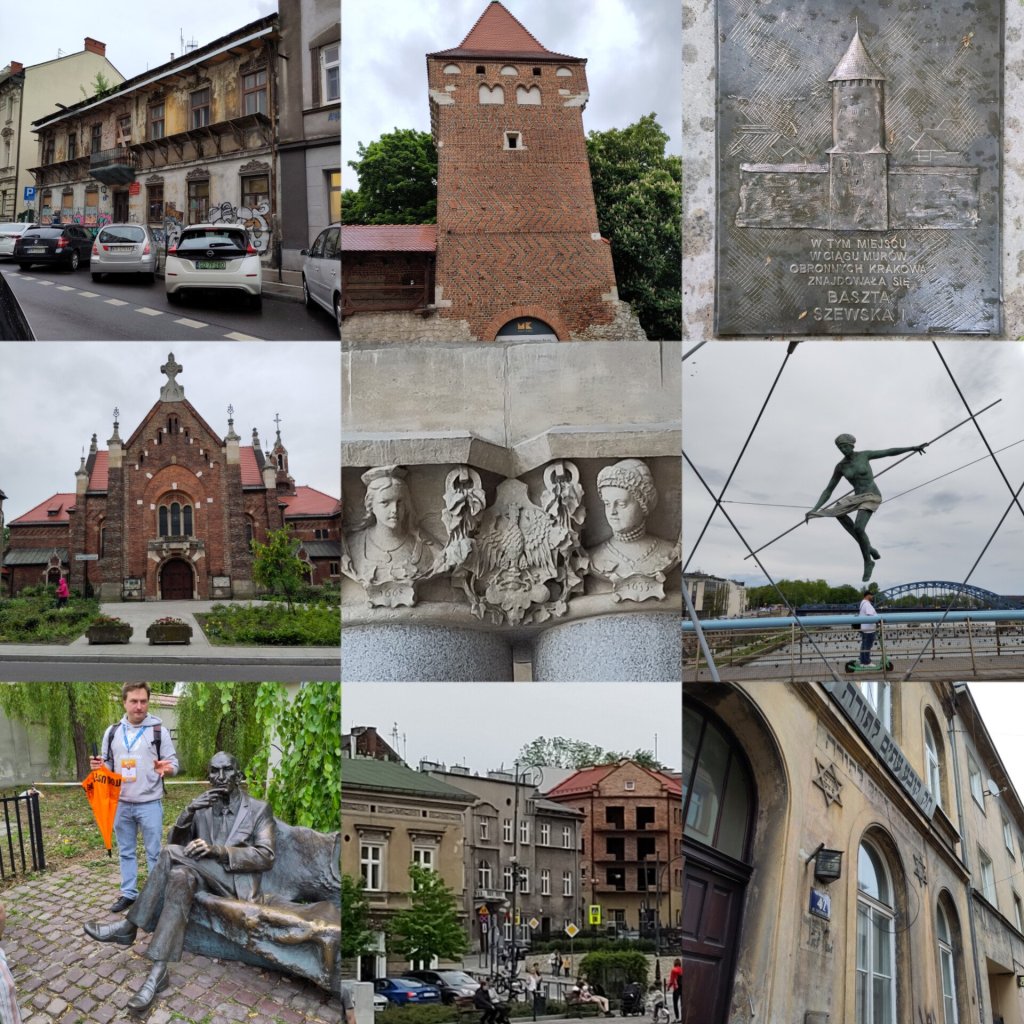
Krakow has some blatantly obvious glorious big buildings in the largest medieval square in the world or some such. So I photographed other things. Above you see a dilapidated old building, the carpenters’ tower, a marker for one of the many towers and wall segments removed to make a circular park in the 19th century, a tucked away church (so many, plus monks and nuns), stone medieval faces, a swinging balance statue on a bridge, a statue of a Polish spy (who got news out of Nazi atrocities, even speaking to Roosevelt, but felt deliberately not listened to), the location of the Krakow ghetto (which kept shrinking), a former synagogue (only 1 of 4 is now active).
Some of the photos were taken on a free tour with Krakow Explorers, run by professional archaeologists. Chris (Krzysztof) is a delight. Look out for the orange umbrellas if you ever go. Baspie dog was welcome too. We visited the Jewish quarter, and he pointed towards where the first Nazi concentration camp once was, right there in Krakow. Before they went big scale.
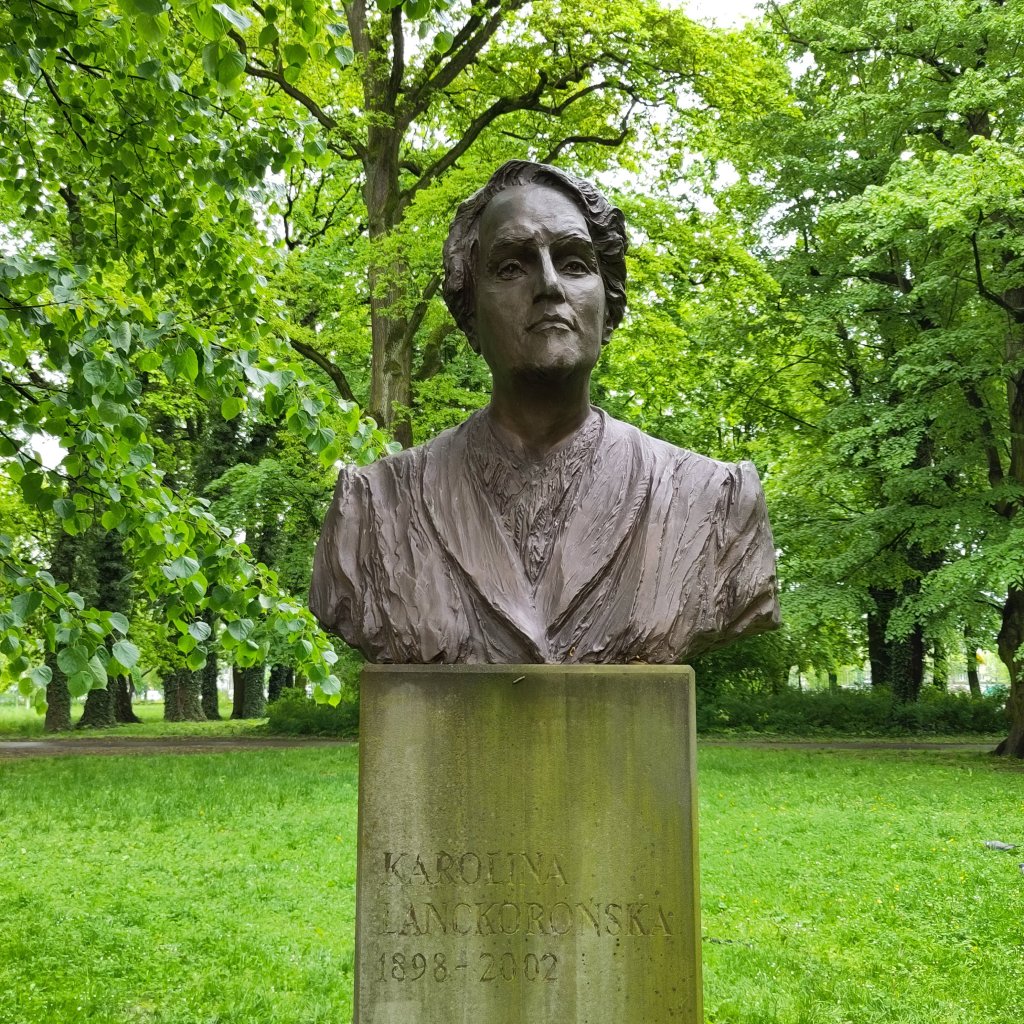

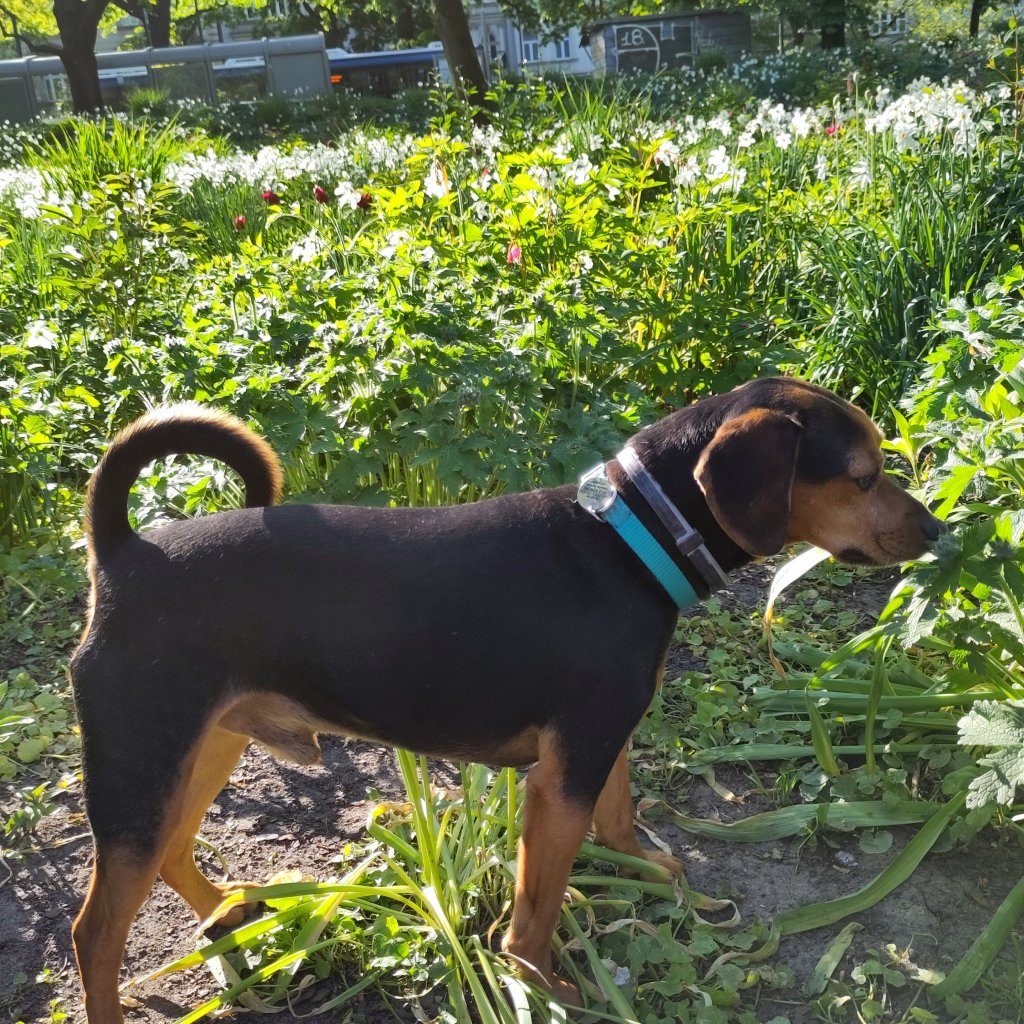
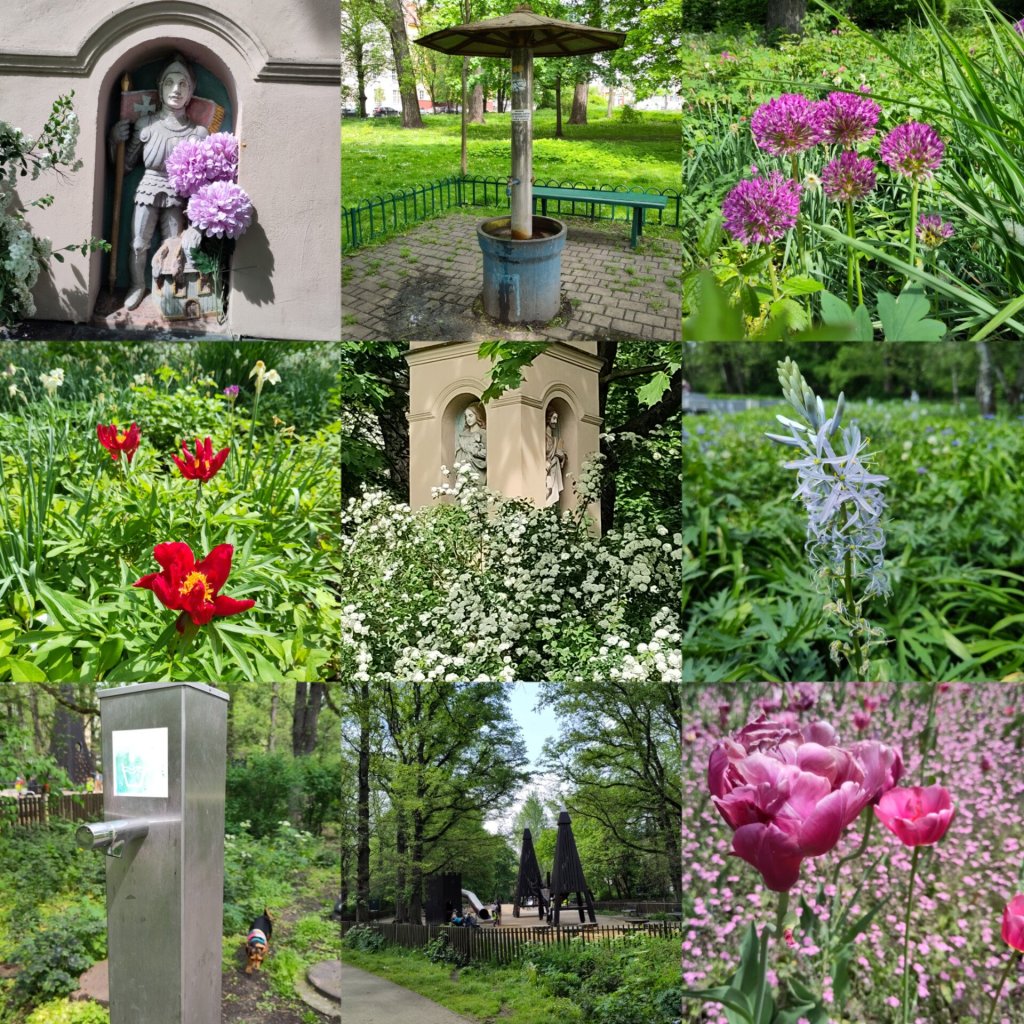
Auschwitz II – Berkenhau
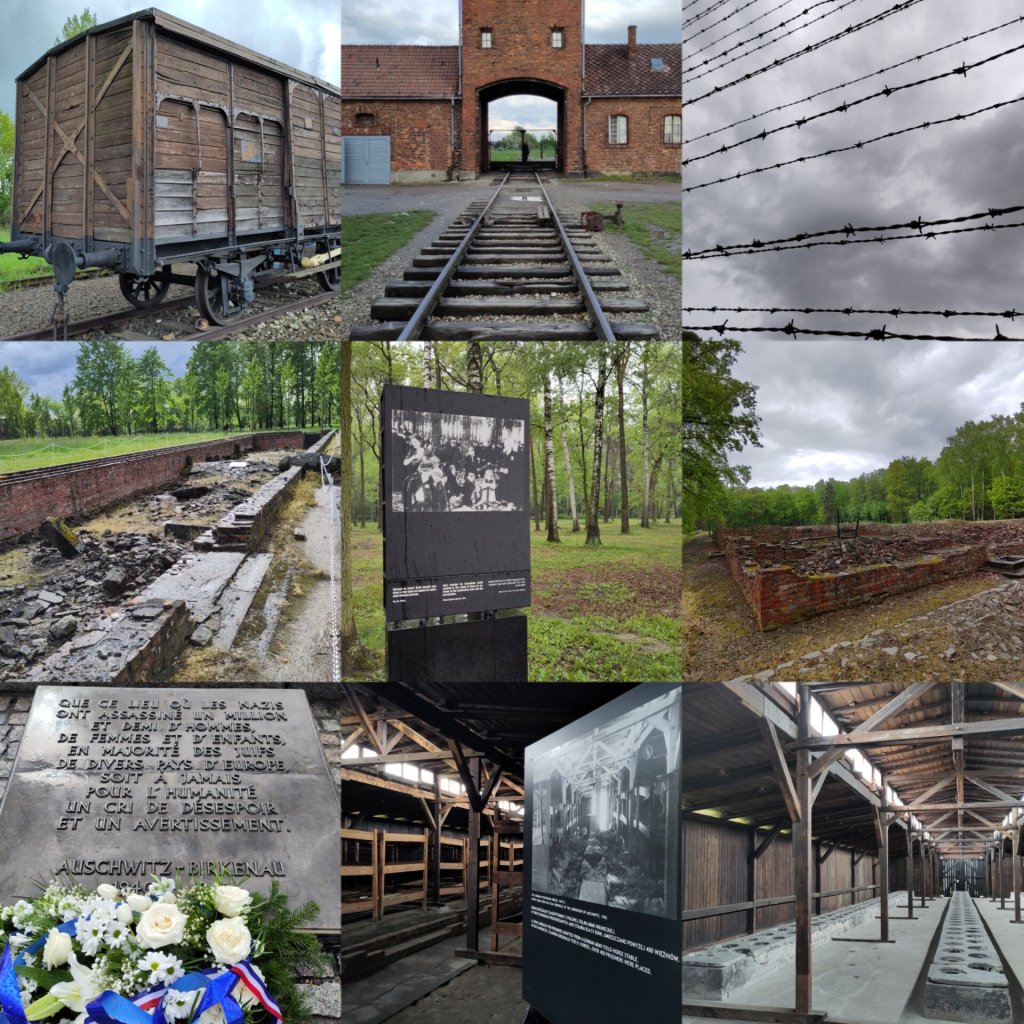
You have to be there to feel it. The vastness of it in particular. Train wagons, the tracks coming in from across Europe, the electrified wire, the rows upon rows of heating chimneys where wooden sheds once stood each housing 400, the gas chambers, including one sunk in the ground to reduce the sound of screaming, the pretty woods where women and children undressed before going for a ‘shower’, the bunks where people often starved to death if not otherwise killed, the mass toilets, and the do not forget memorial tablets in every language of people who were there. Berkenhau was where people too weak to work were either immediately killed (particularly Jews) or starved and diseased to death (particularly Roma).
There was an uprising here towards the end, of the Jews assigned to cremation in Crematorium 4. They attacked their guards, killed 4 of them and blew up the crematorium thanks to dynamite sneaked in by women inmates from factories they worked in. 400 of them were killed for this, but it still slowed down the killing. 900 fewer bodies could be burnt per day.
Auschwitz I
Auschwitz I was the first camp, a reused barracks. First to imprison and enslave the Polish. Later it became the section where people of working ability were vaguely kept alive to be useful. It is also where often lethal medical experiments were performed and gas chambers invented.

Some images:
- ‘Work Will Set You Free’
- The origins of inmates from across the continent (I realised I was travelling some of the tracks built for this transport)
- The remnants of prosthetics and back braces from murdered people with disabilities
- Murdered childrens’ shoes
- Experimented on Roma girls
- The barracks, now leafy, not then
- A Polish resistance guy who got himself into Auschwitz on purpose, to report out, get help in and set up resistance cells
- Each resistance cell of 5 thought itself the only cell and only its lead knew who was in it.
- An impressively smirking female Polish captive – must have been very daring
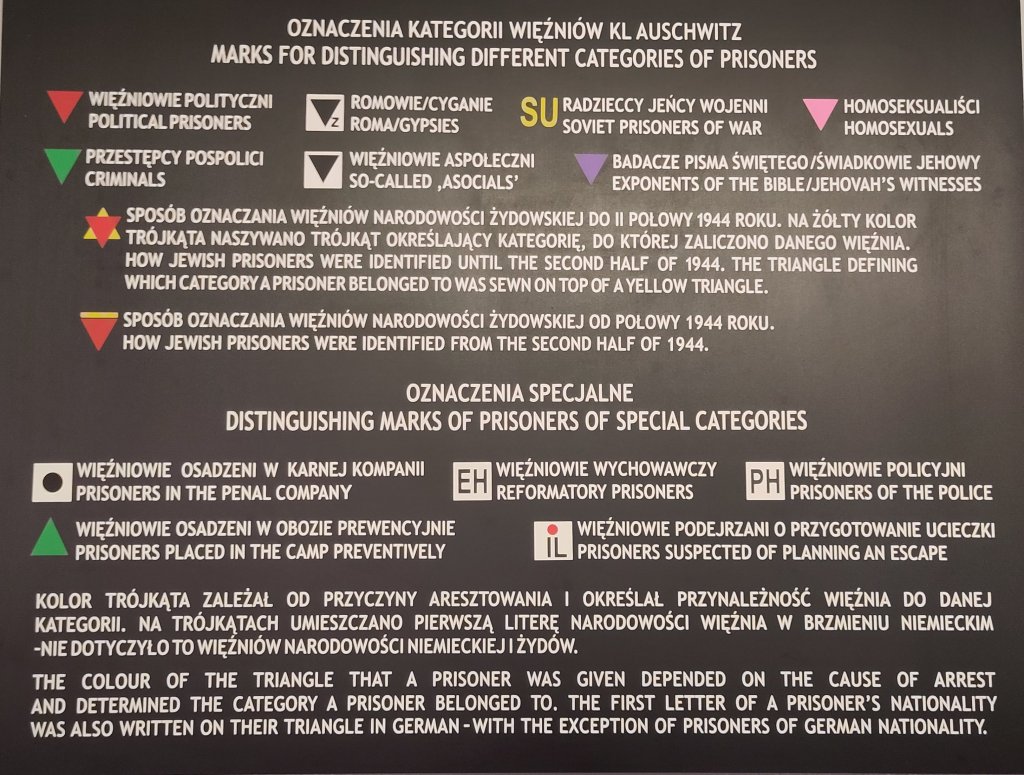
So this is just a snapshot of some things that hit me. It felt gruelling but important. The kids shoes and four Roma girls had me crying. The big display on the complicity of Hungary linked back to the continued denial in Budapest.
I was stung by the realisation that the gay and disabled people who ended here seemed not to be mentioned. The prosthetics etc gad no label. Continued bigotry, one wonders? Or did I miss it? I also have seen nowhere anywhere in Europe yet about what happened to people of colour under the Nazis. What did happen?
Leave a comment